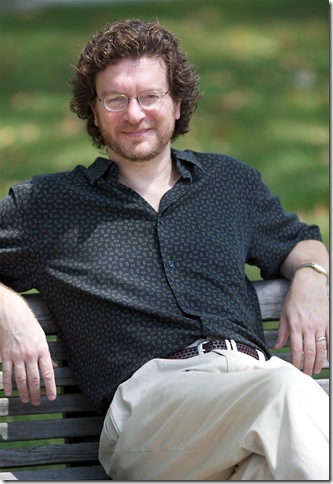The merging of a Renaissance wind band with 21st-century American choral music is an idea that may sound odd on the surface, but composer Kile Smith showed it could work, and work beautifully, when he composed his Vespers in 2007.
The original-instrument band that commissioned the work, Philadelphia-based Piffaro, joined Patrick Dupré Quigley and his Seraphic Fire concert choir Saturday night at All Saints Episcopal Church in Fort Lauderdale for a traversal of the Vespers, an old-school-Lutheran compilation of Latin texts from the Psalms plus the Magnificat, and German-language hymn tunes.
This is an absorbing and fascinating piece, with lush choral writing and imaginative use of the seven-piece Piffaro ensemble, whose players doubled on recorders, shawms (early oboes), dulcians (bassoons) and sackbuts (trombones), as well as theorbo, lute and harp. Some of the combinations of voice and ancient instruments were remarkably atmospheric, particularly in Psalm 27, in which two recorders floated in amid some deeply felt writing about being protected and sheltered by the Lord.
The Vespers is in 13 sections, lasting 65 minutes, with four of the sections devoted to instrumental versions of chorale tunes such as “In dir ist Freude.” Piffaro prefaced the performance with four short settings of “Christ ist erstanden,” including versions by Heinrich Isaac, Stephan Mahu and Michael Praetorius, leading composer Smith, who spoke to the audience before the singing, that Piffaro’s preface would show listeners where he “stole all my ideas.”
But in reality, Smith (who teaches at Cairn University, a Christian college near Philadelphia) tended to use the band much more like a modern ensemble than one from Renaissance times, when these instrumental assemblages would be used in a reinforcing manner rather than one that played with independent lines. And so he had moments where the singers were accompanied by only a theorbo, or at other times with sackbuts doubling a chorale tune line.
Smith’s choral language is rich, sweet but not overripe, and crafted with emotional intensity. He likes word-painting, as one could see by following along with the text, and in both the instrumental and the choral writing the harmonic language grew steadily in complexity and color until it presented an almost palpable representation of faith.
Few contemporary American choral composers have escaped the influence of Morten Lauridsen, and Smith’s music does travel in some of the same districts. But his language is much less granitic, much closer in spirit to the Palestrina tradition than the 20th-century popular song that floats behind much of Lauridsen.
Overall, the most affecting writing came in the Psalm 113 setting (“Laudate pueri Dominum”), Psalm 27 (“Dominus illuminatio mea”), and the Magnificat; the “Laudate pueri” may have been best of all simply because its central melody is wistful, peaceful and memorable. In a way, that is consistent with the idea of the Lutheran hymn: a melody with staying power was one of the goals of adding hymnody, and some of Smith’s writing could use a stronger melodic profile to give it more shape.
Quigley’s direction was forceful and driven, perhaps in the case of the “Laudate pueri,” a little too fast. This is music that can use some more breathing room. And the closing “Deo gratias” was somewhat too strong, as though the volume control had been left way up while the listener was suddenly called away into another room.
But for the most part the singing was ravishing, with a slightly augmented force of 17 singers as opposed to the usual 13 tackling a very complex and difficult score — the section “Herr Christ, der einig Gotts Sohn,” for instance, is in 16 parts, and recalled the heft if not the style of the “Spem in alium” of Thomas Tallis. Sopranos Kathy Mueller and Jolle Greenleaf, standing at opposite sides of the half-circle grouped on the altar, were, along with soprano Jessica Petrus, particularly effective in the Magnificat, singing something of a written-out echo; the central melody had a sinuous, perpetual-motion elegance as it floated above harp and theorbo, giving an effect of a constant magnifying, an endless song of heavenly praise.
The instrumental parts were just as inventive standing alone as the combinations were. The most endearing one was the setting for seven recorders of “O süsser Herre Jesus Christ,” which after the intensity of the Psalm 113 that preceded it sounded like nothing so much as a stream of cool water. The ukulele-like Renaissance guitar was deployed in charming fashion in a setting for recorders and dulcians of “In dir ist Freude,” which gave it back some of the flavor of the Giovanni Gastoldi balletto that it came from.
Quigley noted that the 14th season of Seraphic Fire would feature a new work by American composer Jake Runestad to pair with Schubert’s much-loved Mass in G, and so closed the concert with Runestad’s pretty ”I will lift mine eyes,” set to Psalm 121, as an encore. This was an unusual and very rewarding concert, one that introduced South Florida audiences to a prominent early-music group and a fine American composer, and also demonstrated that music of deep faith written according to a hallowed tradition is as alive as it ever was.
Seraphic Fire’s 14th season opens Oct. 14-18 with the Schubert Mass in G and the Jake Runestad world premiere, at venues in Fort Lauderdale, Miami, Miami Beach and Coral Gables. Call 305-285-9060 or visit seraphicfire.org.
